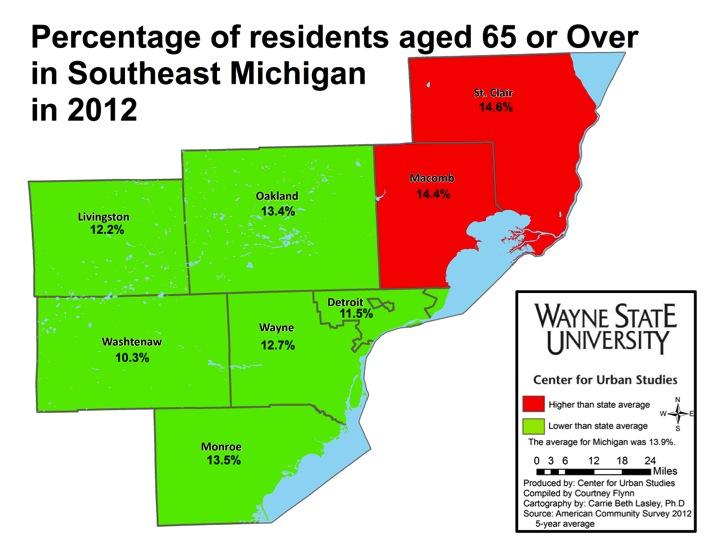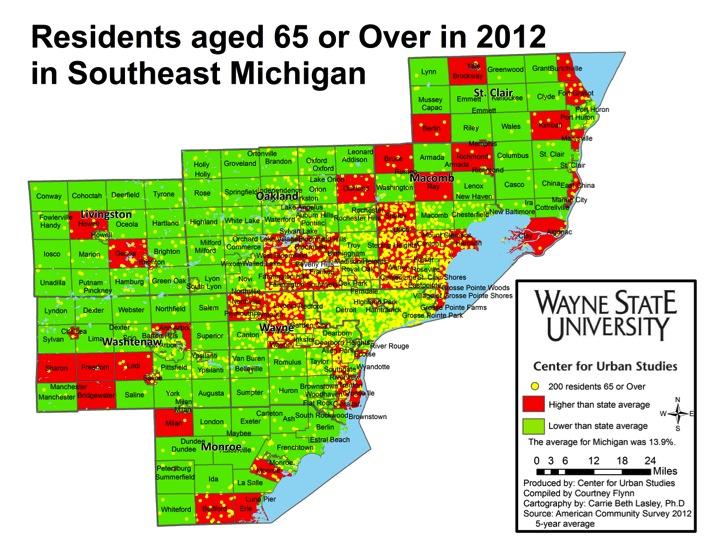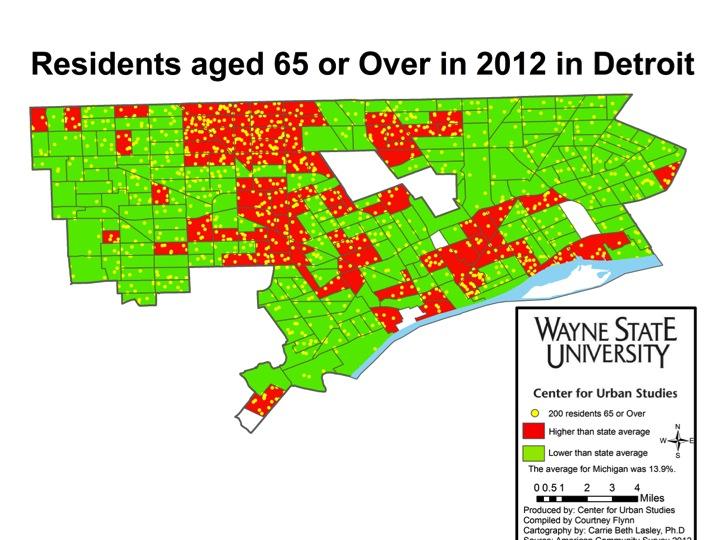As our population ages, there are many factors that will need to be considered. As the Baby Boomers reach retirement age and beyond, there are many issues that will need to be discussed and addressed, from housing surpluses to medical care. In order to address these issues, however, we must first understand the size of the elderly population, ages 65 and older.
In this post, we will examine that population in the seven county region for the year 2012. All data was received from the American Community Survey. According to this data, an average of 13.9% of all residents in the State of Michigan were age 65 and older.

As the above map shows, St. Clair (14.6%) and Macomb (14.4 %) counties have the highest percent of residents age 65 and older in the region. Washtenaw County, which is home to the University of Michigan, has the lowest percent of elderly in the region at, 10.3 percent. Reportedly, in the City of Detroit, 11.5 percent of the population is aged 65 or older.

This map shows that, overall, a majority of communities in the region had less residents aged 65 and older than the state average of 13.9%. The yellow dots depict concentrations where there are 200 or more residents are age 65 and older. While the City of Detroit is lower than the state average (11.54%), the size of the population means that there are still a large number of residents within the city limits or nearby who are aging and may need additional services, such as transportation to health facilities and senior activity centers. There are about 20 communities outside of Wayne County, and southern Oakland and Macomb counties, where the percent of residents age 65 or older is above the state average, including areas near the Ohio border and along Lake St. Clair.

This map sheds additional light on Detroit’s elderly population. The yellow dots depict concentrations of 200 people aged 65 or above. While there are dozens of such areas with such a presence of the elderly population, there are four concentrated areas in the city where the elderly population resides, and comprises a higher proportion than the state average. These areas, colored in red, are located in clusters between the city’s border and Highland Park (which also has a significant elderly population), and on the near East side.